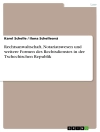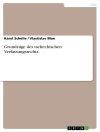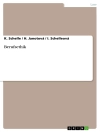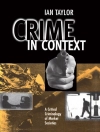This book is one of four volumes on a major empirical migration study by leading Thai migration specialists from Chulalongkorn University (Bangkok) for the United Nations Development Programme (UNDP). This volume examines the protracted refugee situation at the Thai–Myanmar border. Displaced persons are kept in closed settlements, and this has limited their self-reliance. A resettlement program has been implemented and many refugees have been accepted in resettlement countries. Repatriation is not recommended as a durable solution unless Myanmar becomes a safe place for return. Funding and intervention policies of international organizations and NGOs vary. Donors prefer to switch humanitarian assistance to development aid. The book provides realistic policy recommendations for a durable solution for refugees at the borders. Practitioners and policymakers from governments, international organizations and NGOs will benefit from its findings. The volume is also helpful for anyone studyingforced migration and its denouement in the globalized age.
İçerik tablosu
Analysis of the Royal Thai Government Policy towards Displaced Persons from Myanmar.- Introduction.- Literature Review.- RTG policy toward displaced persons from Myanmar: development and current status.- RTG policy and needs of displaced persons.- Solutions and policy options.- Conclusions and recommendations.- Analysis of the Royal Thai Government Policy and of Donor, INGO/NGO and UN Agency Delivery of Humanitarian Assistance for Displaced Persons from Myanmar.- Introduction.- Literature Review.- Funding policy, project implementation strategies and cooperation strategies with the RTG.- Dynamics, needs and constraints of stakeholders.- Positive and negative impacts of existing intervention mechanisms, including gender related aspects.- Limitations and constraints on effective intervention mechanisms.- Conclusions and recommendations.












